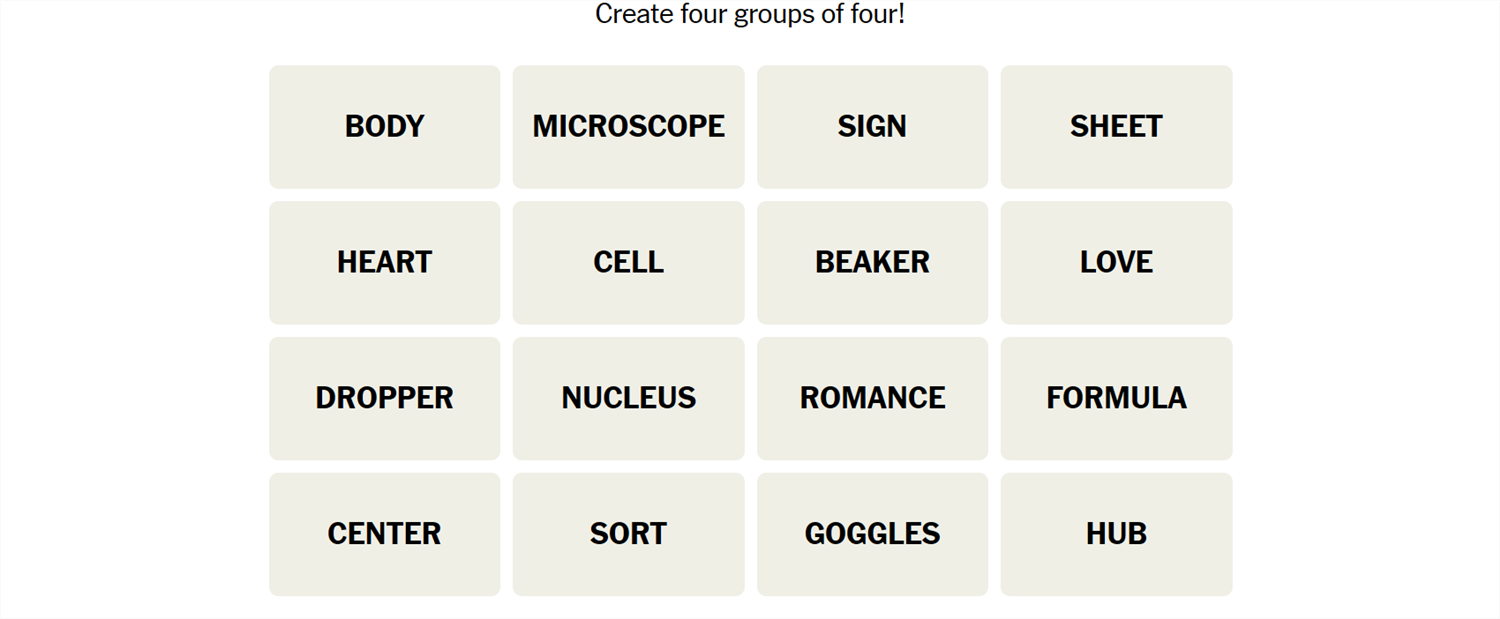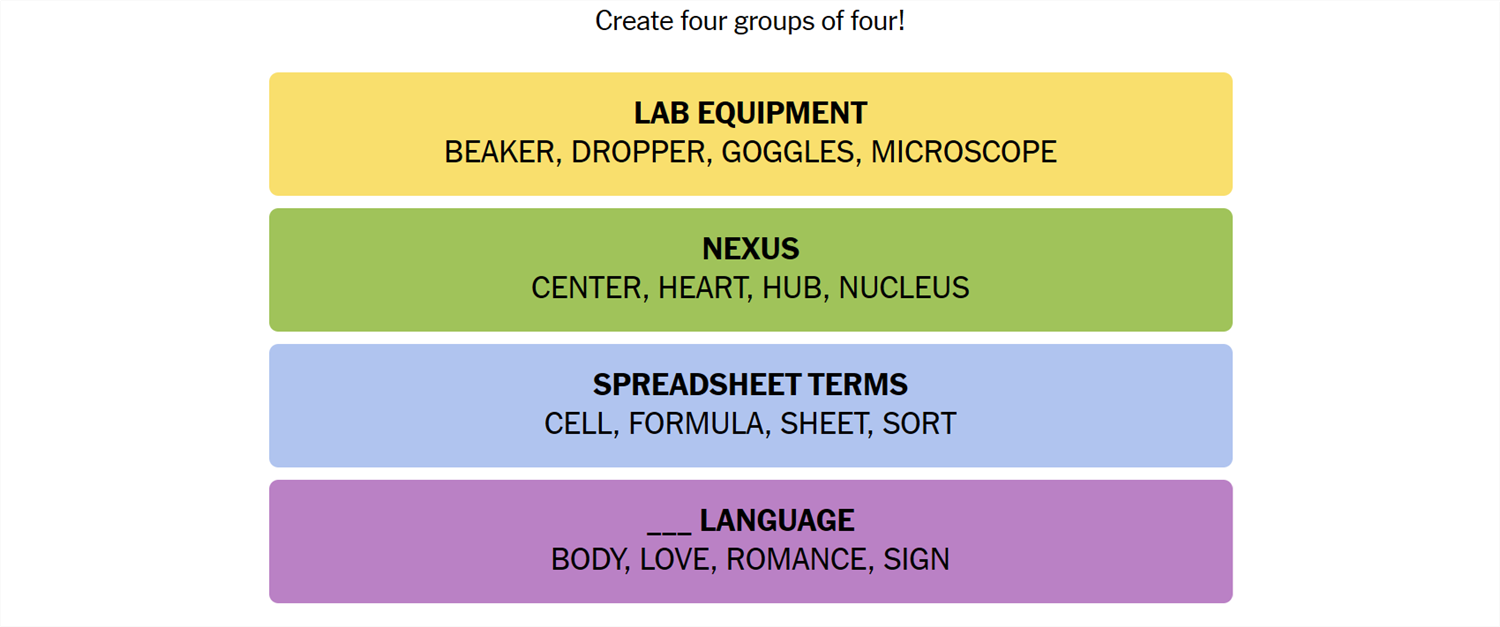Connections is a game from the New York Times that challenges you to find the association between words. It sounds easy, but it isn’t—Connections categories can be almost anything, and they’re usually quite specific. If you need a hand getting the answers, we’ve got you covered.
What Is Connections?
Connections is a game from the New York Times. The objective is simple: sort 16 words into groups of 4. Each group of words will be connected by some common idea or theme. That common element could be anything. We have seen everything from games that rely on the number of letters in the words to categories that require you to spot an extra letter at the end of the word. Sometimes they’re references to economics, other times they reference fairy tales. There is no telling what sort of association there will be between words.
Once you’re confident you understand the connection, select 4 words, then hit “Submit.” You have only four attempts in total, so don’t be too guess-happy.
Hints for Today’s Connections Categories
Here are a few small hints for the 319th Connections game to get you started:
- Yellow: Things a scientist would use.
- Green: Where everything converges.
- Blue: Excel?
- Purple: Also, spoken or written.
What Are Today’s Connections Categories?
If you still need help, the actual categories are:
- Yellow: Lab Equipment
- Green: Nexus
- Blue: Spreadsheet Terms
- Purple: ___ Language
Today’s NYT Connections Answers
Lab Equipment (Yellow):
Beaker, Dropper, Goggles, Microscope
Nexus (Green):
Center, Heart, Hub, Nucleus
Spreadsheet Terms (Blue):
Cell, Formula, Sheet, Sort
____ Language (Purple):
Body, Love, Romance, Sign
How Did We Solve This Connections Game?
April 25th started with a bit of a self-inflicted red herring. Nucleus, beaker, cell, and microscope immediately put science in mind. Closer inspection, however, didn’t reveal any coherent connection between those words.
Shifting slightly, it was suddenly apparent that beaker, dropper, goggles, and microscope are all sorts of equipment you might find in a science lab, so I went with those. Together, they were the Yellow group, “Lab Equipment.”
Nucleus was still nagging at me, so I started looking for words that might go with it. Cell was instantly appealing, but a nucleus is part of a cell—it’d be strange to have them in a category together. So I abandoned biology entirely and focused on synonyms for nucleus instead. With that framing in mind, center, heart, and hub all jumped out, since they’re all ways to describe the center, or point of convergence. It turns out they were in the Green category, which was “Nexus.”
With only 8 words left, cell, formula, and sheet sorta jumped out, since I had Excel open on another screen. Those are terms you encounter when discussing spreadsheets and the like. There are really only 2 other words that might fit in, sign and sort, and between the two, sort seems more likely. My guess was correct: Blue was “Spreadsheet Terms.”
The left only body, love, romance, and sign. After mulling it over for a minute, it occurred to me that they can all precede the word “language.” Body language, love language, romance language, and sign language are all common terms (albeit largely unrelated to each other). Purple was “____ Language.”
How Do You Guess Connections Categories?
There is no quick, reliable way to approach Connections like there is with Wordle, since Connections isn’t algorithmic. However, there are a few things to keep in mind that can help.
- Look for similar parts of speech. Are some words verbs and others nouns? Are some adjectives? Try mentally grouping them based on those categories and see if any other patterns jump out at you.
- Are the words synonyms? Sometimes categories will just be synonyms for a phrase, or very close to synonyms. Don’t rely too closely on this, though. Occasionally, Connections will deliberately throw in words that are sometimes synonyms to mislead you.
- Try saying the words. Sometimes, saying the words helps. One puzzle we saw included the words go, rate, faster, clip, pace, speed, move, commute, and hurry—all of which are obviously related to the idea of motion. However, when you say them, it becomes a little more obvious that only four (go, move, hurry, faster) are things you’d actually say to prompt someone to get moving.
- Expect the red herring. Connections usually has words that could be plausibly, yet incorrectly, grouped together. Take the words Bud, Corona, and Light, as an example. You might instinctively see those three words together and assume they’re lumped together in a category related to beer—but they weren’t.
- Look for distinct words. If a word on your board doesn’t have multiple meanings or can really only be used in one context, try using that word as the basis for a category.
- Shuffle the board. Sometimes, moving words around will help you look at them in new ways.
If you didn’t solve this one, don’t feel too bad—there’s always tomorrow! And those words may align with a topic you’re interested in, giving you a leg up on the competition.






